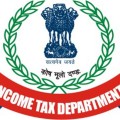.
To reduce the volume of litigation the CBDT vide its Circular No. 21/2015 F No 279/Misc. 142/2007-ITJ (Pt) dated 10-12-2015 has revised monetory limit of tax effect for filing appeals by Department before ITAT, High Courts and Supreme Court. Now appeals/ SLPs would not be filed by department in cases where the tax effect does not exceed the monetary limits given hereunder:
|
S No |
Appeals in Income-tax matters |
Monetary Limit (in Rs) |
|
1 |
Before Appellate Tribunal |
10,00,000/- |
|
2 |
Before High Court |
20,00,000/- |
|
3 |
Before Supreme Court |
25,00,000/- |
View circular on Revised monetory limit of filing appeals by Department as under:
Circular No. 21/2015
F No 279/Misc. 142/2007-ITJ (Pt)
Government of India
Ministry of Finance
Department of Revenue
Central Board Direct Taxes
New Delhi the 10th December, 2015
Subject : Revision of monetary limits for filing of appeals by the Department before Income Tax Appellate Tribunal and High Courts and SLP before Supreme Court – measures for reducing litigation – Reg.
Reference is invited to Board’s instruction No 5/2014 dated 10.07.2014 wherein monetary limits and other conditions for filing departmental appeals (in Income-tax matters) before Appellate Tribunal and High Courts and SLP before the Supreme Court were specified.
- In supersession of the above instruction, it has been decided by the Board that departmental appeals may be filed on merits before Appellate Tribunal and High Courts and SLP before the Supreme Court keeping in view the monetary limits and conditions specified below.
- Henceforth, appeals/ SLPs shall not be filed in cases where the tax effect does not exceed the monetary limits given hereunder:
|
S No |
Appeals in Income-tax matters | Monetary Limit (in Rs) |
|
1 |
Before Appellate Tribunal |
10,00,000/- |
|
2 |
Before High Court |
20,00,000/- |
|
3 |
Before Supreme Court |
25,00,000/- |
It is clarified that an appeal should not be filed merely because the tax effect in a case exceeds the monetary limits prescribed above. Filing of appeal in such cases is to be decided on merits of the case.
- For this purpose, “tax effect” means the difference between the tax on the total income assessed and the tax that would have been chargeable had such total income been reduced by the amount of income in respect of the issues against which appeal is intended to be filed (hereinafter referred to as “disputed issues”). However the tax will not include any interest thereon, except where chargeability of interest itself is in dispute. In case the chargeability of interest is the issue under dispute, the amount of interest shall be the tax effect. In cases where returned loss is reduced or assessed as income, the tax effect would include notional tax on disputed additions. In case of penalty orders, the tax effect will mean quantum of penalty deleted or reduced in the order to be appealed against.
- The Assessing Officer shall calculate the tax effect separately for every assessment year in respect of the disputed issues in the case of every assessee. If, in the case of an assessee, the disputed issues arise in more than one assessment year, appeal, can be filed in respect of such assessment year or years in which the tax effect in respect of the disputed issues exceeds the monetary limit specified in para 3. No appeal shall be filed in respect of an assessment year or years in which the tax effect is less than the monetary limit specified in para 3. In other words, henceforth, appeals can be filed only with reference to the tax effect in the relevant assessment year. However, in case of a composite order of any High Court or appellate authority, which involves more than one assessment year and common issues in more than one assessment year, appeal shall be filed in respect of all such assessment years even if the ‘tax effect’ is less than the prescribed monetary limits in any of the year(s), if it is decided to file appeal in respect of the year(s) in which ‘tax effect’ exceeds the monetary limit prescribed. In case where a composite order/ judgement involves more than one assessee, each assessee shall be dealt with separately.
- In a case where appeal before a Tribunal or a Court is not filed only on account of the tax effect being less than the monetary limit specified above, the Commissioner of Income-tax shall specifically record that “even though the decision is not acceptable, appeal is not being filed only on the consideration that the tax effect is less than the monetary limit specified in this instruction”. Further, in such cases, there will be no presumption that the Income-tax Department has acquiesced in the decision on the disputed issues. The Income-tax Department shall not be precluded from filing an appeal against the disputed issues in the case of the same assessee for any other assessment year, or in the case of any other assessee for the same or any other assessment year, if the tax effect exceeds the specified monetary limits.
- In the past, a number of instances have come to the notice of the Board, whereby an assessee has claimed relief from the Tribunal or the Court only on the ground that the Department has implicitly accepted the decision of the Tribunal or Court in the case of the assessee for any other assessment year or in the case of any other assessee for the same or any other assessment year, by not filing an appeal on the same disputed issues. The Departmental representatives/counsels must make every effort to bring to the notice of the Tribunal or the Court that the appeal in such cases was not filed or not admitted only for the reason of the tax effect being less than the specified monetary limit and, therefore, no inference should be drawn that the decisions rendered therein were acceptable to the Department. Accordingly, they should impress upon the Tribunal or the Court that such cases do not have any precedent value. As the evidence of not filing appeal due to this instruction may have to be produced in courts, the judicial folders in the office of CsIT must be maintained in a systemic manner for easy retrieval.
- Adverse judgments relating to the following issues should be contested on merits notwithstanding that the tax effect entailed is less than the monetary limits specified in para 3 above or there is no tax effect:
(a) Where the Constitutional validity of the provisions of an Act or Rule are under challenge, or
(b) Where Board’s order, Notification, Instruction or Circular has been held to be illegal or ultra vires, or
(c) Where Revenue Audit objection in the case has been accepted by the Department, or
(d) Where the addition relates to undisclosed foreign assets/ bank accounts.
- The monetary limits specified in para 3 above shall not apply to writ matters and direct tax matters other than Income tax. Filing of appeals in other Direct tax matters shall continue to be governed by relevant provisions of statute & rules. Further, filing of appeal in cases of Income Tax, where the tax effect is not quantifiable or not involved, such as the case of registration of trusts or institutions undersection 12A of the IT Act, 1961, shall not be governed by the limits specified in para 3 above and decision to file appeal in such cases may be taken on merits of a particular case.
- This instruction will apply retrospectively to pending appeals and appeals to be filed henceforth in High Courts/ Tribunals. Pending appeals below the specified tax limits in para 3 above may be withdrawn/ not pressed. Appeals before the Supreme Court will be governed by the instructions on this subject, operative at the time when such appeal was filed.
- This issues underSection 268A (1) of theIncome-tax Act 1961.
(D. S. Chaudhry)
CIT (A&J), CBDT,
New Delhi
Source Document : Circular No. 21/2015 F No 279/Misc. 142/2007-ITJ (Pt) dated 10-12-2015




